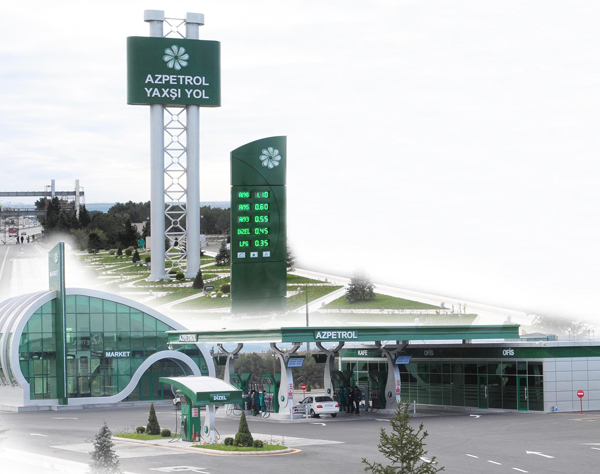Azerbaijan in transition to Euro 3 fuel standard

By Nigar Orujova
The Azerbaijani government is keen on applying the Euro 3 environmental standard on fuel, but this transition is expected to take some time.
Azerbaijan started enforcing the Euro 2 standard on July 1, 2011.
Ramiz Hasanov, who heads the state body in charge of standards and patents, said Tuesday that at present the Euro 3 environmental standard in the country applies to vehicles and their spare parts.
"Each transition to [a new] euro standard -- for example, from Euro 3 to Euro 4, requires approximately $1 billion," Hasanov added.
"Imports of vehicles that do not meet Euro-3 standard requirements will be banned in Azerbaijan from July 1," Hasanov said in June, adding that "old cars [that can't meet the requirement] will leave the market and the country's car park will be renewed."
Azerbaijani state energy company SOCAR's vice-president for refining, David Mammadov, said earlier that Euro 3 standard gasoline production is planned for 2014, when the reconstruction of existing refineries will be completed.
SOCAR's commissioning a new oil and gas refining and petrochemical complex to be constructed in the Garadagh district of Baku will make it possible to further make a transition from Euro 4 to Euro 5.
According to the State Standards and Patents Committee, production of fuel meeting the Euro- 4 standard is planned to be carried out in Azerbaijan in 2015.
The only gasoline producer in Azerbaijan, SOCAR, has two oil refineries -- the Heydar Aliyev Baku Oil Refinery and Oil Refinery Azneftyag. The total processing capacity of the two refineries is 20 million tons per year.
81 percent of gasoline currently produced in the country is used to meet domestic demand, while the rest is exported. Most of diesel fuel is exported abroad and only 35 percent is sold in the domestic market.
According to the State Committee for Standardization, Metrology and Patents, a new AZS 636-2012 "Vehicles. Ecological Classes" standard for fuel and harmful emissions from vehicles, which envisions the Euro-3 standard implementation, went into force in Azerbaijan from August 1, 2012.
In accordance with this standard, vehicles are divided into six environmental classes depending on the level of emissions envisaged by the design. The standard does not apply to vehicles which have already passed customs control and have been delivered to the country.
European emission standards define the acceptable limits for exhaust emissions of new vehicles sold in European Union member states.
Currently, the limits for emissions are regulated for most vehicle types, including cars, trucks, trains, tractors and similar vehicles. For each vehicle type, different standards apply.
Harmful emissions
Vehicle emissions contribute to the increasing concentration of gases that are leading to climate change. In order of significance, the principal greenhouse gases associated with road transport are carbon dioxide (CO2), methane (CH4) and nitrous oxide (N2O).
Road transport is the third largest and the fastest growing source of greenhouse gases. There is a growing body of evidence to link vehicle pollutants to human ill health including the incidence of respiratory and cardio-pulmonary disease and lung cancer.
According to the World Health Organization, up to 13,000 deaths per year among children aged up to 4 years across Europe are directly attributable to outdoor pollution. The WHO estimates that if pollution levels were returned to within EU limits, more than 5,000 or these lives could be saved each year.
European directives have been instrumental in reducing what is known as regulated emissions. These include carbon monoxide (CO), nitrogen oxides (NOx), hydrocarbons (HCs) and particulate matter less than 10 microns in size (PM10).
First introduced in 1992, these form a set of rolling regulations designed to become more stringent year on year. Currently limits for new cars and light-duty vans must conform to Euro 5 standard, which came into force on September 1, 2009, while the new Euro 6 standard will be in effect from September 1, 2014.
The effect of tighter Euro standards on vehicle emissions has been to accelerate the introduction of greener vehicle technologies.
For petrol cars, this has been achieved in part through the use of the three-way catalytic converter and the move to fuel injection systems. For diesels, NOx and particulate emissions have been reduced through the development of direct injection engines and diesel particulate filters (DPFs).
These technological advances, together with the cleaner fuels that made these developments possible, have led to a dramatic reduction in regulated pollutants; so much so, that a car manufactured today produces twenty times fewer emissions than a car made in 1970.
In contrast to the legislation for regulated pollutants, there was until recently no current EU law which limits the amount of carbon dioxide produced by cars.
However, in 2009, the European Parliament passed new car CO2 legislation that sets an emissions cap of 130 g/km averaged over all new vehicles produced by each manufacturer by 2015. The 130 g/km average will be the equivalent of 58 mpg for diesel engines and 52 mpg for petrol engines.
Reaching this goal will be phased in over three years; by 2012, 65% of each manufacturer's newly registered cars must comply, 75% by 2013 and 80% by 2014 and 100% by 2015. An extended target is set to be an average of 95 g/km by 2020.
